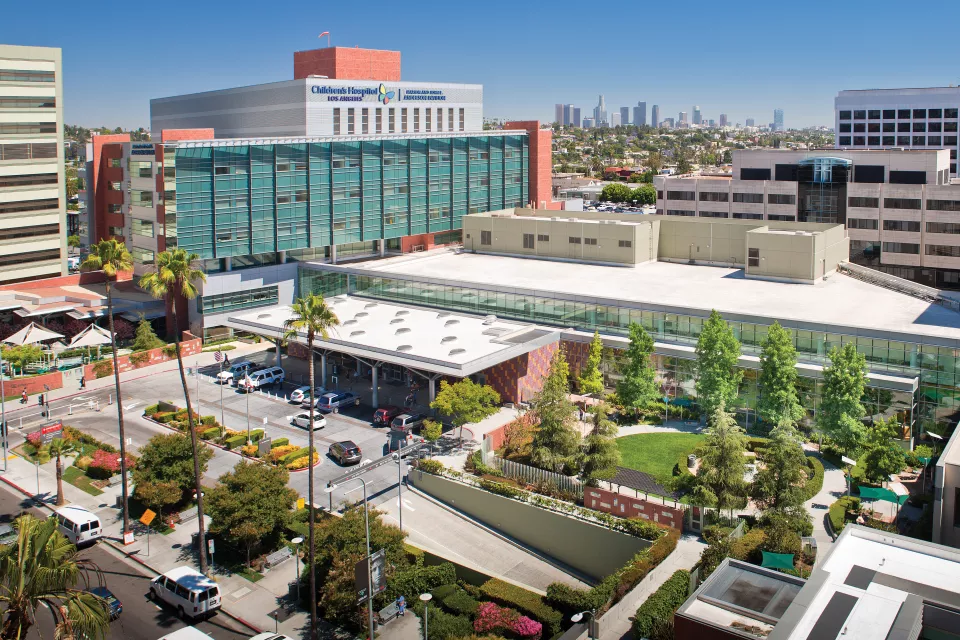Our faculty members performing Basic and Translational laboratory research in the Cancer and Blood Disease Institute contribute new discoveries and develop translational strategies for delivering these discoveries to more effectively diagnose and treat children with cancer and blood diseases.
Our goals:
- To understand the molecular and cell biology of childhood cancers and leukemias and the interactions of malignant cells with host cells, especially those of the immune system and the tumor microenvironment
- To understand the physiology and biology of vascular disease in hemoglobinopathies and to develop multimodal biophysical markers
- To translate this knowledge into improvements in diagnosis, risk assessment, and therapy
Research Focus
Oncology
The Institute’s Oncology cancer research focuses on neural tumors (brain, neuroblastoma and retinoblastoma), acute leukemia and sarcomas. Physicians and scientists collaborate to investigate:
- Genomic and epigenomic abnormalities associated with malignancy
- The interaction of cancer cells with the immune system and other cells in the tumor microenvironment
- New therapeutic strategies targeting tumor cell abnormalities
- The immune system
- The TME along with companion biomarkers
Hematology
The Institute’s Hematology research focuses on hemoglobinopathies, particularly sickle cell disease. The research calibrates biomarkers reflecting 1) cardiac autonomic nervous system imbalance and peripheral and pain-triggered vasoconstriction; and 2) peripheral vascular function and regional cerebral flow and oxygenation. This will provide standardized measurement and processing tools for clinical application.
Our Approach
Our bench to bedside and back to bench approach to problem-solving integrates scientific and clinical expertise – taking the best ideas from the laboratory to the patient in the form of promising new treatments. The basic and translational research faculty members are working to discover and develop new ways to treat pediatric cancer and blood diseases.
Consortia
Home to more major multi-centered clinical trials and research consortia than any other center of its kind in the country, the Cancer and Blood Disease Institute collaborates closely with other pediatric hematology, oncology, blood and marrow transplantation programs across North America and around the world. We lead three multi-institution consortia that specialize in testing new strategies for the first time:
- Neuroblastoma: New Approaches to Neuroblastoma Consortium
- Leukemia: Therapeutic Advances for Childhood Leukemia/Lymphoma
- Other aggressive childhood cancers: Pediatric Blood and Marrow Transplant Consortium
These consortia allow us to rapidly translate laboratory findings into the first clinical testing of new therapeutic strategies. Children’s Hospital Los Angeles is the only institution in the United States that leads three clinical trials consortia.
Within this environment of leading edge research and care, we train the next generation of pediatric specialists in Hematology, Oncology, Blood and Marrow Transplantation.
Innovation
Oncology
Our Oncology cancer research, which follows the Discovery to Development to Delivery (3Ds) paradigm, translates laboratory discoveries into clinical applications (bench to bedside).
Neuroblastoma
Neuroblastoma, a tumor of the nervous system outside the brain, is one of the most common solid tumors in infants and children. Our team of researchers discovered that neuroblastoma cells can turn on normal cells in their microenvironment in a way that helps tumor cells grow. They utilized a new mouse model of neuroblastoma that is remarkably similar to the human disease. This model is being used to identify combination of immunotherapy agents that can target the tumor cells and lead to long-term immune response against tumor cells. Learn more about the Neuroblastoma Program.
Brain Tumors
Brain tumors are another common solid cancer and also the most common cause of cancer-related death in children. Our researchers are investigating PID1, a little-known gene that appears to function as a strong inhibitor of growth of both childhood and adult brain tumors. In the laboratory, PID1 renders brain tumor cells more susceptible to being killed by chemotherapy. Their research has the ultimate goal of developing strategies that will harness the power of PID1 in new treatments.
Leukemia
Patients whose leukemia cells do not respond to drug treatment have a poor prognosis. Our researchers’ studies identified a protein that is made by the non-leukemia cells which protects the leukemia cells against drugs, and they are discovering how an immune cell type called a natural killer cell could be coaxed to kill drug-resistant leukemia cells located in the bone marrow. They have been investigating the mechanisms for this and have found that fat cells attract ALL cells and provide them fuel for growth and survival to help them resist chemotherapy.
Hematology
Our Hematology research focuses on hemoglobinopathies. Our researchers have shown that sickle cell disease (SCD) subjects have marked dysregulation of the autonomic nervous system (ANS), and that sign and pain can cause vasoconstriction. Our Institute has assembled a group of skilled investigators from multiple disciplines - pain and behavioral research, biomedical engineering, cardiology, chemistry, hematology, physiology and biophysics, pulmonology, and radiology - that develops and calibrates biomarkers reflecting 1) cardiac ANS imbalance, peripheral and pain-triggered vasoconstriction; and 2) peripheral vascular function and regional cerebral flow and oxygenation.
Another goal is to provide standardized measurement and processing tools for use by others. The translation of these biomarkers and derived tools to the SCD research community will fulfill a need and be invaluable for stratifying risk, monitoring disease status, and measuring the effects of therapeutic interventions in patients with SCD. In the course of validating these biomarkers, these investigators will improve understanding of vascular disease in SCD and other hemoglobinopathies, as well as in normal subjects.


